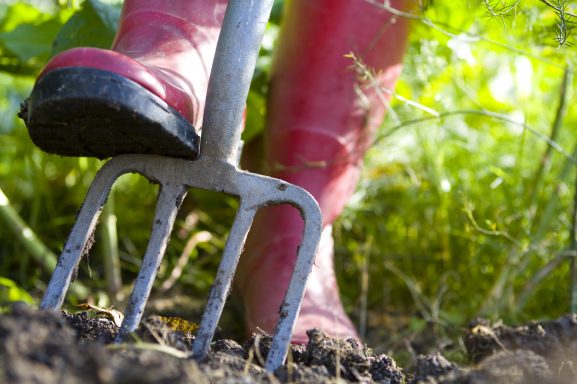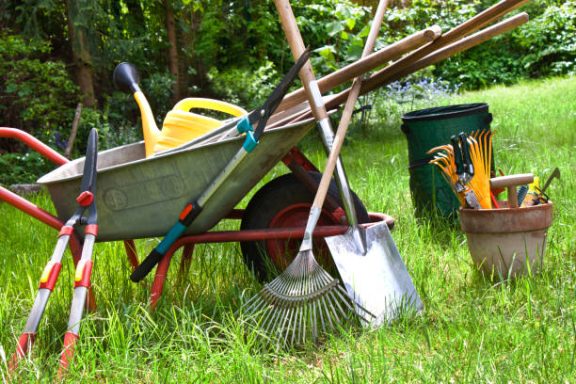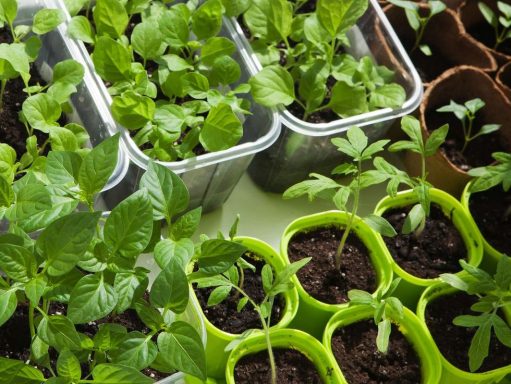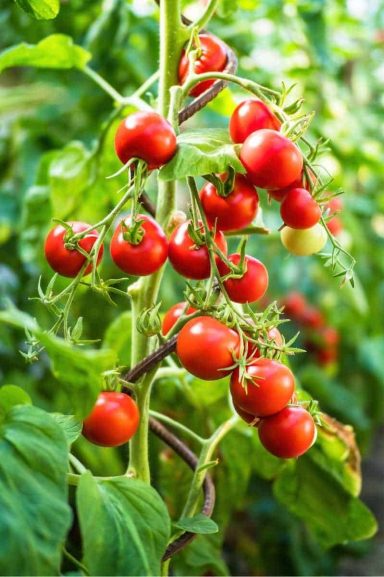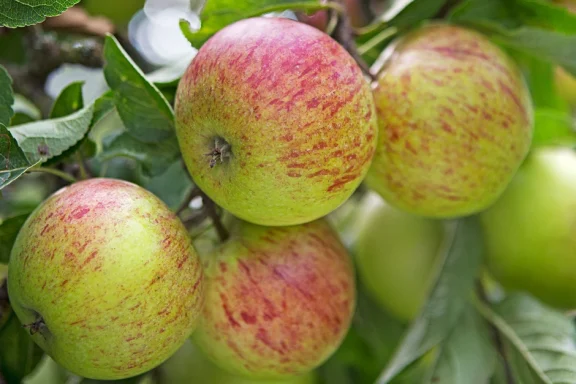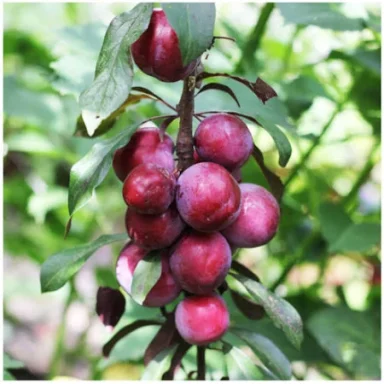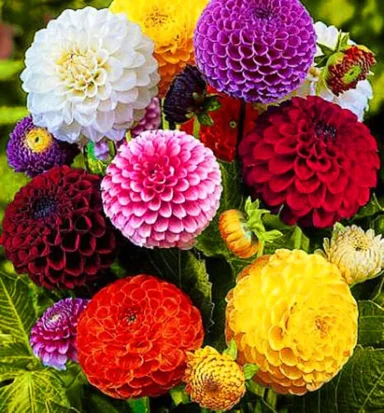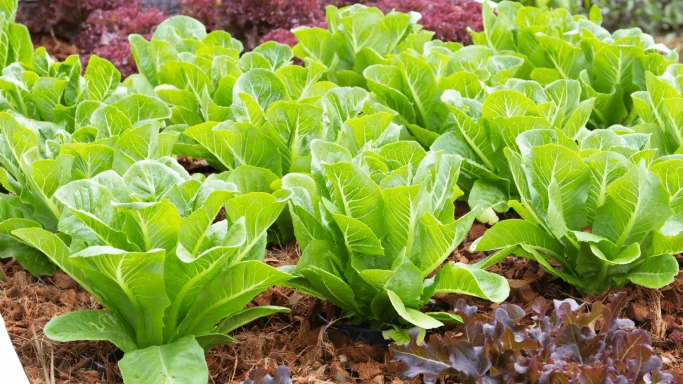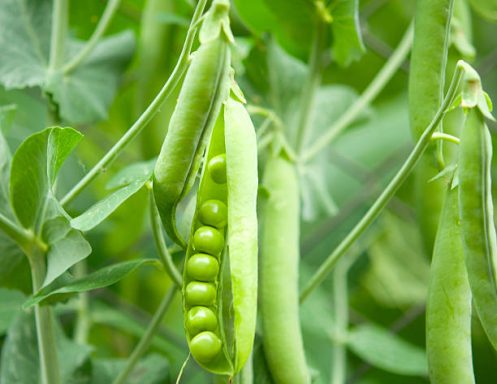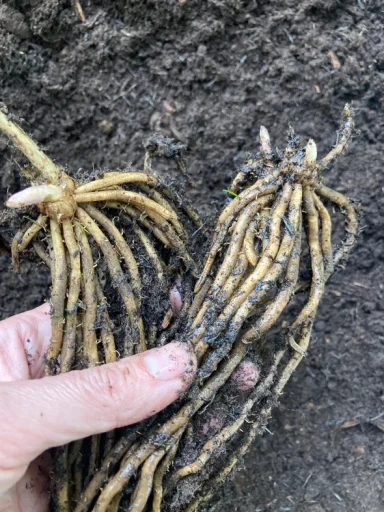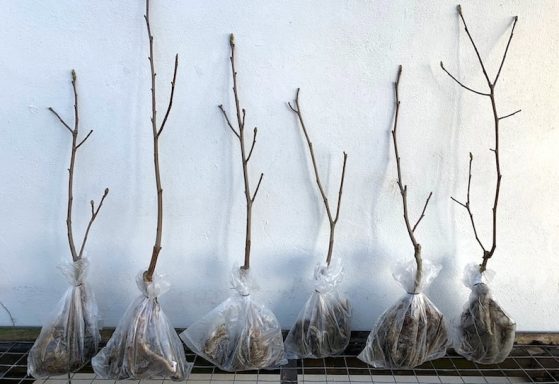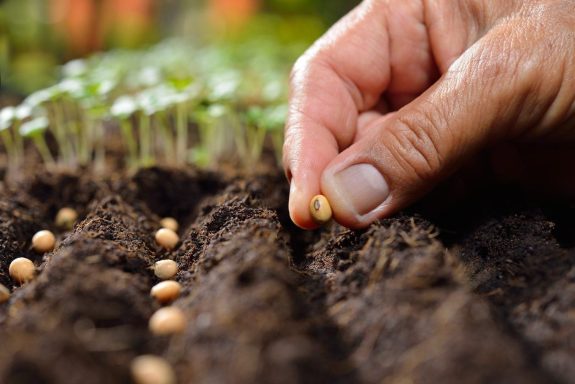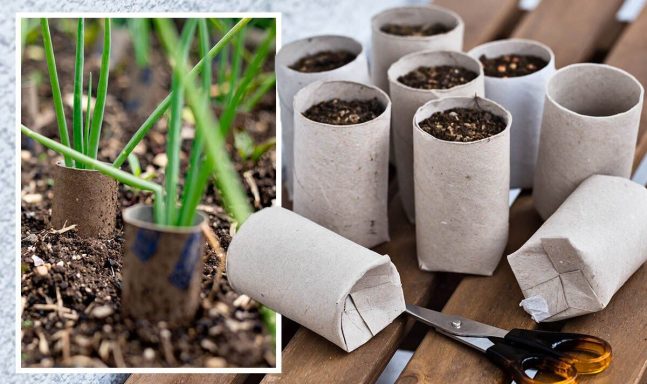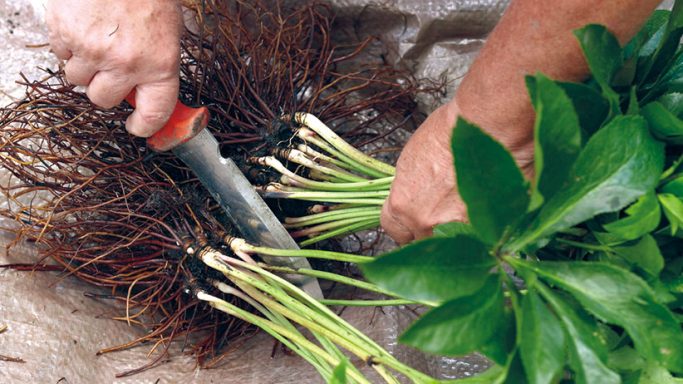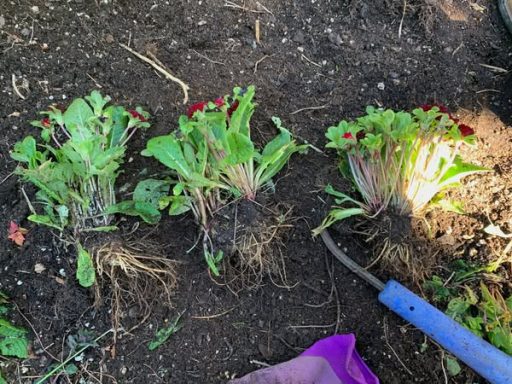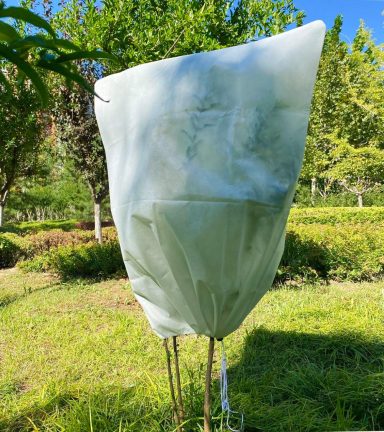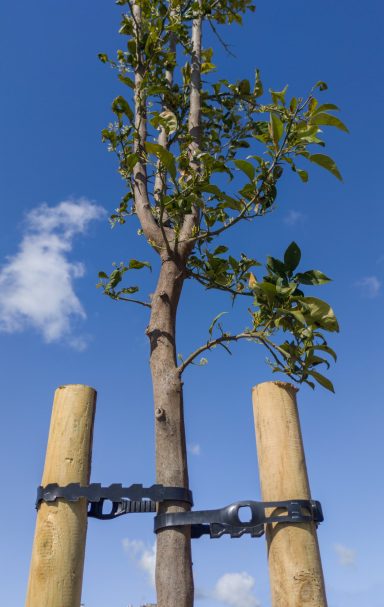Month by Month
February
Continue any late digging and then leave the soil to settle ready for spring sowing.
On wet days, clean pots, seed trays and any tools and equipment . Tidy the greenhouse and shed.
Covering bare ground with polythene sheets or cardboard prevents nutrients from leaching out. Covering beds with fleece two or three weeks ahead of seeding them will also soon bring the soil temperature up.
Start sowing indoors early crops such as tomatoes, peppers and aubergines in trays for pricking out or modules for direct planting.
Feed fruit trees and bushes with high potash or slow release fertiliser.
Potatoes:
To "chit" potatoes, place seed potatoes in a single layer in an egg carton or seed tray with the "eyes" facing upwards, in cool 7-12C (50F), indirect light. Wait for the sprouts to grow to 2.5cm, and are a green/purple colour.
Top Tip: A recent Gardeners Question Time (GQT) programme advised that keeping all the sprouts will result in more potatoes, but smaller. Removing some of the sprouts gave fewer, but larger ones.
Plant outside when all risk of frost has passed. Dig trenches about 10cms deep, spaced 60-90cms apart, and place "chitted" potatoes 30cms apart in trench. Cover with soil and water lightly. Keep the soil consistently moist but not waterlogged.
Plant "First Early" varieties, e.g. Lady Crystl, Rocket or Sharpes Express, in late March, "Second Early" varieties such as Charlotte, Kestrel, or Sally, in early to mid-April, and "Maincrop" varieties, Cara, Desiree, Harmony, King Edward or Maris Piper, and Sarpo Mira if a blight resistant variety is required, in mid to late April.
Pot Dahlia tubers into pots in a light, warm place to sprout and keep the compost moist. These can then be transplanted into their flowering site once all risk of frost has passed, usually in late May, or early to mid-June. Plant Lily bulbs indoors or in a cool greenhouse. Grow oriental lilies in acidic soil or ericaceous compost, and other types, including Asiatic and Turk's Cap lilies in neutral to alkaline soil or multi-purpose compost. All types need a sheltered sunny spot to thrive, and a deep pot if growing in containers. Plant lily bulbs from October to April. Stake taller varieties and protect all types from lily beetle. Allow the foliage to die down naturally after flowering.
Sow Hardy Annuals, such as Echinacea and Calendula in pots or modules to provide Summer colour.
Sow Sweet Peas in a cold frame or a cool room in the house. When 10cm tall, pinch out tips to encourage bushy growth. Plant out in mid-spring after all danger of frost has passed, and keep well watered. Most varieties have tendrils that 'self-cling' to supports, but some need tying in. Feed with a high potash fertiliser, such as tomato food, when flower buds appear. Regular picking encourages more flowers to form.
March
For most vegetables wait for the soil temperature to be at least 7C. Sow carrots, lettuce, radish, parsnip, beetroot, peas and similar hardy crops.
Dig out any problem weeds, especially perennial weeds as early weeding helps control the spread for the rest of the year.
Anything planted indoors should be hardened off before planting outside. Keep an eye on the weather, it is better to wait another week or so, than risk losing them to an unexpected frost. Covering with horticultural fleece will help plants establish. Feed cabbages and other brassicas with pelleted chicken manure or other nitrogen-rich fertiliser.
Finish bare root planting and water if the weather is dry. Plant strawberry runners, asparagus crowns and Jerusalem artichokes. From mid-March (weather permitting) to mid-April plant out garlic, shallots, e.g. Biztro or Yellow Moon and onion sets, e.g. Rumba, Sturon, Turbo, Red Baron and Red Karmen.
Onions like a warm, sunny spot in well-drained soil, with watering in dry spells and regular weeding. Onions can also be grown in large pots.
Plant onion sets 2cm (¾in) deep in drills or gently push them into loose soil in straight lines, so the tip is just showing at the surface and weeding between the rows is easier. Space them 5–10cm (2–4in) apart, in rows 25–30cm (10–12in) apart.
Firm the soil around them and water well. When they start to sprout, watch for birds as they will attempt to pull them out of the ground.
Plant Gladioli bulbs in pots from March and keep in a frost-free spot such as a greenhouse. Place corms in seed trays or boxes and place in a light, warm spot around 10ºC (50ºF) to encourage them to sprout before planting. Alternatively, sow directly into the ground from May.
Plant Peonies in a moist but well-drained soil, in full sun or part shade, between October and March, with the budding "eyes" about 2cm below the soil. Avoid overwatering newly planted peonies as this is a common cause of plant failure. As these are heavy blooms, they will need support.
Sow Marigolds, Delphiniums, and Sunflowers , along with a host of other lovely varieties of flowering plants such as Nasturtiums, Cat Nip, Cosmos, Cornflower Love Lies a Bleeding, or Antirrhinum , commonly known as Snapdragons, and many more.
For early sowings indoors, sow seeds in a warm place, transplant seedlings into small pots or modular trays, and grow on in a warm, well-lit place.
Harden off plants over a couple of weeks, and once frosts have passed, plant outside.
Plant early summer flowering shrubs like Weigela and Californian lilac to provide colour in the garden through May and June.
April
"The world may change, but spring always returns with open arms." Unknown
April is a lovely time. The weather is slowly getting warmer, and days are noticeable longer. Time to get busy in the garden or on the allotment!!
If you haven’t done already, to let in more light, give the greenhouse a good scrub with hot soapy water . Use a greenhouse fumigator to eliminate pests and diseases. Clean paths and paving, a pressure washer is useful, and patio cleaner.
As soil warms in the garden or allotment, prepare seed beds ready for sowing, keep weed-free and rake to a fine tilth. Dig 5cm (or more) layer of compost or well-rotted manure, or spread a general-purpose fertiliser, poultry manure pellets or fish, blood and bone fertiliser.
In the greenhouse or a sunny windowsill, some of the seeds to sow are marrows, courgettes, pumpkins, squash, sweet peppers, tomatoes, cucumbers, aubergines, celery, and lettuce.
When warm enough and frosts passed, into well-prepared soil, seeds to sow are beetroot, Swiss chard, summer cauliflower, Kohl Rabi, lettuce, leeks, radish, turnip, and spinach.
Sow a dedicated seedbed of brassicas to provide transplants of sprouting broccoli, cauliflowers and cabbages, for planting out in June or July. Protect early outdoor sowings with cloches or fleece.
Mid-April, start runner beans in pots indoors. Beans do not tolerate cold ,so do not plant out until every risk of frost has passed. If your plot is exposed, wait until late May through to July, to sow them directly in the garden.
If you haven’t already, sow sweet pea seeds under cover, in the greenhouse or a sunny windowsill. Soak seeds for 24hrs to help germination. Sow into root trainers, long thin pots or cardboard loo rolls to help develop good root systems. Plant out May/June and provide good support.
Start a Garden Diary to keep track of all seeds sown, this will help with planning.
Wildflowers are loved by Bees and Pollinators, sow these undercover in pots or outside in drifts.
"Not only do Bees pollinate our food crops, they are vital for the survival of wild plants that support our wildlife". Woodland Trust
Using a hoe, gently weed through beds and borders. Apply weed killer to perennial weeds in paving and patios. Look for signs of pests and diseases, early prevention is easier than having to fight an infestation.
Lift and divide established border perennials, e.g. Hostas, to improve growth. This will create new plants for your garden or to give to friends. Divide primroses once they have finished flowering and redistribute around the garden for next Spring.
Protect fruit blossom from late frosts/cold nights, covering with horticultural fleece. Mulch fruit trees with well-rotted manure or garden compost, taking care not to mound mulch up around the trunk. Top-dress patio fruit trees with fresh compost and slow-release fertiliser.
Chit second early potatoes, e.g. Charlotte and plant out in first half of month. Plant maincrop potatoes, e.g. King Edward, during the second half.
Sow carrots and pea seeds directly outside. Tender crops, e.g. sweetcorn and courgettes should be sown under cover or kept in the greenhouse/sunny windowsill before planting out in May.
Continue planting summer-flowering bulbs and corms such as gladioli and dahlia in containers to grow on in the greenhouse. Only put these outside once all risk of frost is over, usually May. Pinch out tips of Fuchsia plants to encourage bushy growth for the coming Summer. Cut back dead foliage on perennials and ornamental grasses, to make way for new growth.
Remove old mop head Hydrangea flower heads to just above a pair of strong emerging buds. Hydrangea buds can be easily knocked off, so cut carefully using the tips of sharp secateurs.
Dead head spring bulbs to stop seeding. Leave foliage intact, allowing to die back naturally, to encourage all goodness to return to the bulb for a beautiful display next year. If not done already, feed raspberry canes, fruit bushes and fruit trees to encourage a good crop and apply a slow-release fertiliser, lightly forking it into the soil surface around their base. Feed Roses with rose fertiliser as they come into growth .
Tie in climbing roses and check tree stakes and ties to make sure they are not tight. Install water butts to harvest rainwater from roofs, including the greenhouse, ready for the summer ahead
Look for new growth at base of penstemons, prune by cutting back all the old shoots to the base; but if there are no new shoots, cut just above the lowest set of leaves. Prune Forsythia as it finishes flowering, cutting back to strong, young shoots. Trim winter-flowering heathers when flowers drop, to prevent the plants becoming leggy.
Sow lawn seed now on well-prepared soil and keep moist until it germinates. Or, for an instant lawn, lay turf and keep moist until it’s established. Repair bare patches and apply Spring and Summer high nitrogen fertiliser. If moss and weeds are a problem, apply Feed and Weed. Aerate compacted areas of lawn, by spiking with a lawn aerator or for smaller areas, a garden fork. Brush away worm casts on dry days and mow lawn as required, lowering the mower blades towards the end of the month.
.
- Seeds, bulbs, compounds, products, and tools all available for Members from the Garden Shop.
“April hath put a spirit of youth in everything." William Shakespeare
©Copyright. All rights reserved.
We need your consent to load the translations
We use a third-party service to translate the website content that may collect data about your activity. Please review the details in the privacy policy and accept the service to view the translations.
